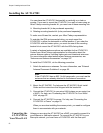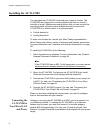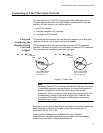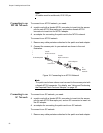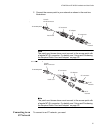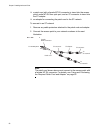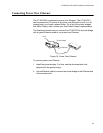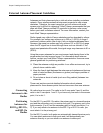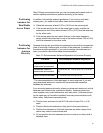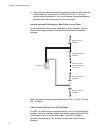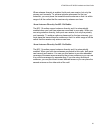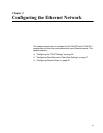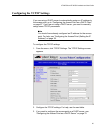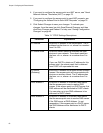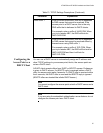
Chapter 2: Installing the Access Points
60
External Antenna Placement Guidelines
Antennas and their placement play a vital role when installing a wireless
network. Every wireless network environment presents its own unique
obstacles. Therefore, the exact range that you will achieve with each
access point is difficult to determine. Allied Telesyn recommends that you
allow an Allied Telesyn-certified RF specialist to perform a site survey
before you install a wireless network. For more information, contact your
local Allied Telesyn representative.
Radio signals may reflect off some obstacles and be absorbed by others.
For example, two radios may achieve up to 305 m (1,000 ft) of range if
positioned outdoors within line of sight, with no obstacles between them.
However, the same two radios may only achieve 152 m (500 ft) of range
when the RF signal has to travel through items such as cubicles. If the
signal must penetrate office walls, the signal range may decrease to 91 m
(300 ft).
Using the proper antennas for your environment and placing them in the
proper areas can help improve range. For information about antenna
options, contact your local Allied Telesyn representative. Here are some
general guidelines for positioning antennas:
Place the antenna as high as possible. In an office environment, try to
place it above cubicle walls.
Keep the line-of-sight between the antennas and wireless end devices
clear of metal surfaces (like beams or girders) and large quantities of
paper products.
Do not place a sheet of metal (such as a filing cabinet) between two
antennas.
These next sections provide detailed information about antenna
placement for those access points that can have more than one antenna.
Connecting
Antennas to the
Radios
All radios have two ports. The radio in slot 2 uses ports 3 and 4, and the
radio in slot 2 uses ports 1 and 2. If you have only one radio in the access
point, it is in slot 1.
Positioning
Antennas for
802.11g, 802.11b,
and 802.11a
Radios
For the 802.11g and 802.11b radios, the primary port is a transmit/receive
port and the secondary port is a receive-only port. The primary port is the
right connector (2 or 4) and the secondary port is the left connector (1 or
3). If you only attach one antenna to the 802.11g or 802.11b radio, you
must attach it to the primary port.
For the 802.11a radio, both ports are automatically transmit/receive ports,
You can attach antennas to both ports and it will automatically use
antenna diversity or you can attach one antenna to either port.



